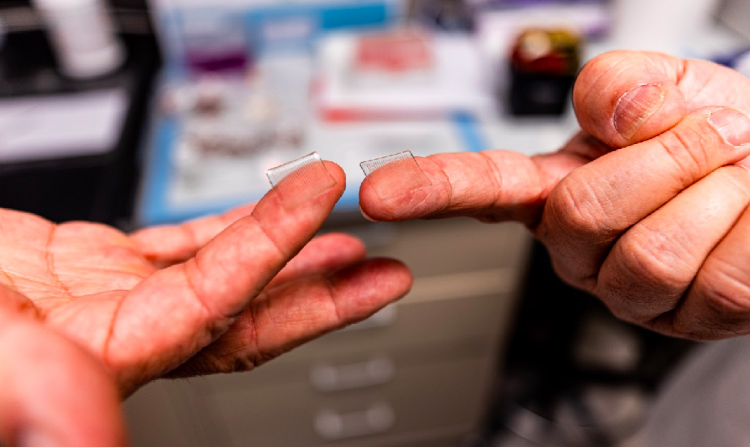Pittsburgh Researchers Go to Battle with COVID-19
Pitt’s School of Medicine announces potential vaccine to help end pandemic
By Jeff Martinelli
Published April 6, 2020
Read Time: 2 mins
The devastation caused by the COVID-19 pandemic has prompted a massive effort by scientists and researchers to develop a vaccine to treat the disease.
One of those efforts can be found in a research lab at the University of Pittsburgh, contained in something so small that it can fit on the tip of your finger.
Scientists from the University of Pittsburgh School of Medicine, one of the leading medical research centers in the world, have developed a potential vaccine against SARS-CoV-2, the coronavirus that caused the COVID-19 pandemic. When tested in mice, the vaccine produces antibodies thought to be sufficient for neutralizing the virus.
“It is a Band-Aid-like patch that has hundreds of microscopic needles, made up of a sugar-like substance that rapidly dissolves in the body,” said Louis Falo, professor and chair of dermatology at UPMC, at a press conference Thursday announcing the team’s findings.
The microneedle array, a patch of 400 tiny needles, delivers the vaccine when pressed into the skin, where the immune reaction is strongest, Falo said.
Even with these promising developments, the potential vaccine must still move through clinical trials, which may take a year or more, he added.
If successful, it wouldn’t be the first time Pitt’s world-renowned researchers developed a cure that changed the world. This year is the 65th anniversary of Dr. Jonas Salk creating the polio vaccine at this same school of medicine.
That experience has certainly helped Pitt researchers, who were able to act quickly because they had already laid the groundwork during earlier coronavirus epidemics in recent years.
“We had previous experience on SARS-CoV in 2003 and MERS-CoV in 2014. These two viruses, which are closely related to SARS-CoV-2, teach us that a particular protein, called a spike protein, is important for inducing immunity against the virus,” said Andrea Gambotto, associate professor of surgery at the Pitt School of Medicine.
“We knew exactly where to fight this new virus,” he said. “That’s why it’s important to fund vaccine research. You never know where the next pandemic will come from.”
Or the cure, for that matter.
Compared to the experimental mRNA vaccine candidate that just entered clinical trials, the Pitt vaccine follows a more established approach, using lab-made pieces of viral protein to build immunity, in much the same way that flu shots are developed. The researchers’ paper appeared April 2 in eBioMedicine and is published by The Lancet medical journal.
“Our ability to rapidly develop this vaccine was a result of scientists with expertise in diverse areas of research working together with a common goal,” said Falo.
The research team is now in the process of applying for Food and Drug Administration approval of what is called an investigational new drug in anticipation of starting a phase I human clinical trial in the next few months.
“Testing in patients would typically require at least a year and probably longer,” Falo said. “This particular situation is different from anything we’ve ever seen, so we don’t know how long the clinical development process will take. Recently announced revisions to the normal processes suggest we may be able to advance this faster.”
Watch
This Next
Read
This Next






